Canon EF 100-400mm f/4.5-5.6L IS USM Lens Review
Where do I even start with Canon’s EF 100-400mm f/4.5-5.6L IS USM (the 100-400)?
Mine was the 2nd EF lens I bought, and has faithfully served me for as long as I’ve been shooting on Canon’s EOS platform. It’s been my go to lens for just about anything that requires reach and not needing a Sherpa to help you with your gear. Suffice to say, I find the lens very handy, even if that means compromising.
Though Canon’s 100-400 is somewhat long in the tooth, the design dating back to the mid-90s and finally released in 1998, the lens has held up quite well considering.
So why consider the 100-400?
Simply put, the 100-400 puts an incredible combination of flexibility, reach, and functionality in a relatively compact package.
Build
Relatively speaking the EF 100-400mm f/4.5-5.6L IS USM is one of Canon’s older EF lenses. It originally entered production in November of 1998, which means it was probably on the drawing board back in ’95 or ’96. Age, hasn’t been entirely unkind to the 100-400, and in many ways, it has aged far better than some of its contemporaries; at the same time, its age does show in places.
The EF 100-400mm f/4.5-5.6L IS USM is well built and big, at least by normal lens standards. It’s about the same size as Canon’s 70-200mm f/2.8L, though it eschews 1/1-3 to 2 stops of aperture (and a fixed aperture) for twice as much reach, it’s a fair trade if reach is what you need.
The 100-400 is mostly metal in construction, including the lens barrels, lens mount, and as far as I can tell, the filter threads. It’s also finished in Canon’s “big L” off-white color. While there may be some debate over whether the off-white color is purely a marketing ploy, an engineering necessity, or a bit of both, it does a commendable job keeping the lens cool to the touch, even on a hot sunny day. In fact, that becomes painfully obvious if you have to have the lens and a camera out in the sun for any length of time.
Functionally, the 100-400 is a bit of an oddball in Canon’s current line up; it’s one of only 2 push-pull zooms Canon still makes—the other is Canon’s EF 28-300mm f/3.5-5.6L IS USM. The push pull design is one of those things that photographers either love or hate.
When it comes to weather sealing, I consider the EF 100-400mm f/4.5-5.6L IS USM a fair weather lens. There’s no gasket around the lens mount, but more importantly, there zoom mechanism isn’t really weather sealed and this can lead to a big problem if you’re not careful. Specifically there’s the potential for debris to degrade the zoom-clutch mechanism, which can lead to catastrophic clutch failure. I say can, and I would underline can, as far more 100-400 owners will never have a problem with their lens than will.
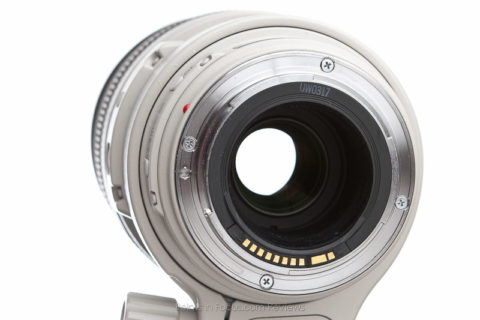
Unfortunately, I was one of those 100-400 owners that had suffered through this. The first sign I saw of the trouble ahead was when I started getting black/dark gray material stuck to the lens barrel between the 100mm and 135mm focal length marks; though this could have been entirely coincidental as well. However, the ultimate failure was sudden and simply resulted in the lens being jammed in the 400mm position unable to move—at no time prior to failure did I notice anything wrong or becoming progressively worse with respect to the zooming the lens.
In retrospect, I think there are at least two things you can do to mitigate the potential for this problem in the first place, and I’ve made them standard practice since having my lens repaired.
First, is keeping the inner lens barrel (the one with the focal length markings) clean and free of sand, mud, water, and debris. Take extra care, if you wipe your lens down with a damp towel after use, to insure that the lens barrel is dry before collapsing the zoom. This also means taking extra care if you’re going to use the lens in an environment like say beach where it might be prudent to tape some plastic around the lens so it can zoom without exposing the inner barrel.
The second point is not over tightening the zoom clutch/lock. This may or may not help, but I had previously been in the habit of tightening down the clutch past the point where the focus ring spins when you turn the zoom lock. While I didn’t think it was excessive, it may have been. I don’t really know. However, I now tighten the clutch only to the point where the focus ring turns when turning the clutch ring. In my experience that’s enough to stop the lens from sliding. If that’s not the case for your particular lens, I would be very careful how much further past that point I tightened down the zoom lock.
Handling
In the hand
The push-pull zoom design is something photographers either love or hate. Personally, I find the push-pull design makes it easy to adjust the zoom accurately while tracking something that’s in motion.
The other nice thing about the way Canon build this lens, is that the push-pull zoom and zoom clutch can locked at any specific focal. I’ve used this for example, to keep the lens’s focal length fixed as I track the moon as it progresses overhead. As it stands, I’m unaware of a rotating-ring style 80/100-400mm zoom that can be locked at any focal length like the Canon push-pull 100-400 can.
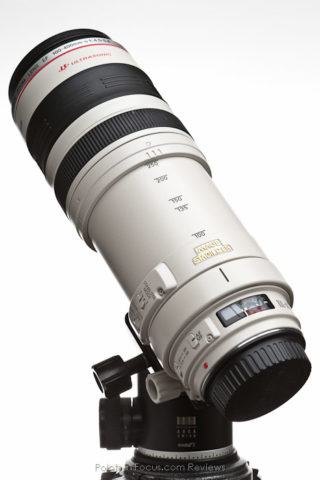
The manual focus ring is on the forward, moving, lens barrel. Meaning at longer focal lengths it will be further from your body and the rest of the controls on the lens. Of course, if you’re not relying on manual focus, it’s not that big of a deal.
The lens uses a Ring-USM autofocus system, and the feel and behavior is pretty standard for Canon’s L lenses. Focus throw is about 135° and the focus ring turns about as smooth as any other L lens. Like other ring-USM setups, the focus ring will continue to rotate past the actual focus stops. Finally, like other Canon internal focus lenses, it’s possible to focus past infinity.
I don’t find that I use manual focus on this lens other than when using it to photograph the moon or some other astronomical body or there simply isn’t enough light or contrast for AF to function. As a result, I don’t find the position of the focus ring to be a problem at all. That said, as with most other Canon lenses, I find the in ability to easily get infinity focus easily and accurately when I need it, usually in the dark, frustrating more often than not.
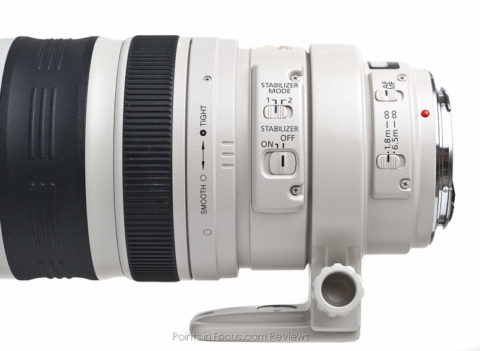
There are 4 controls switches, organized into two bulbous groups on the exterior of the lens. Just in front of the lens mount and adjacent to the nearly useless distance scale are the two focus control switches; a manual/auto switch and the focus limiter. Focus can be limited from the full range of 1.8m to infinity to 6.5m to infinity.
The second two switches, grouped in a bulge ahead of the tripod ring, control the optical image stabilizer. The smaller top switch selects the stabilizer mode—1 for static subjects and 2 for panning subjects—while the larger bottom switch turns the IS system on and off.
While it works, this arrangement is considerably less usable than either the EF 70-200mm f/4L IS USM or EF 70-200mm f/2.8L IS II USM, where all the lens’s controls are grouped together. This applies more so, if you’ve got your hand on the moving part and at longer focal lengths.
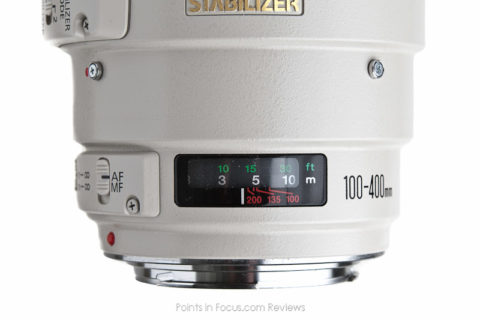
The tripod ring is similar to the tripod ring on Canon’s 70-200/2.8s—that is it doesn’t hinge open, instead it is a solid piece that clamps down on the lens when you tighten the screw near the foot. The ring is keyed to allow removal, which is done by aligning the red dot on the ring with the lens’s red alignment indicator. When the tripod ring is removed, 4 small rollers protrude from the surface of the lens under where the ring would normally be.
Rotating the lens in the tripod ring is smooth, however, at several points the rotation will have a noticeable “bump” when the rollers pass from one side of the track to the other.
The only gotcha is that it’s certainly possible for the ring to disengage from the lens when the camera is rotated into some awkward angle (with the view finder at a 45° angle down and to the left). However, when in use, I’ve never found this to be an actual issue.
In the Bag
I know it probably seems funny to talk about how a lens handles when it’s in the camera bag, but with increasingly tight airline carry on restrictions, and when carrying a bag of gear all day, I think it bears some consideration when talking about bigger lenses.
The EF 100-400mm f/4.5-5.6L IS USM when collapsed to 100mm packs in the same approximate dimensions as a 70-200mm f/2.8 zoom. This means quite simply that any bag that says it will accommodate a 70-200mm zoom will accommodate the 100-400. In fact, the 100-400 collapsed is considerably shorter than even the EF 400mm f/5.6L USM.
Performance
There’s no point in reviewing a lens without at least spending some time talking about how it fares optically. As I’ve pointed out in previous reviews, I don’t have the money to do full on objective optical tests, so I tend to focus on what I do have the ability to test and discuss somewhat objectively. If you’re looking for hardcore numbers, I’d normally suggest DXOMark, but they haven’t actually tested this lens yet. A close second choice would be SLRgear’s tests. Though having been done on a 5D or 20D, they are a bit dated when talking about modern high-resolution cameras.
In not so objective terms, the lens is OK but not great by my standards. Which I guess doesn’t really mean anything to anybody else, so let me see if I can be a little clearer.
The EF 100-400mm f/4.5-5.6L IS USM isn’t the sharpest lens in Canon’s arsenal, or mine. That said, it’s considerably sharper than the $500 consumer 70-300s Canon makes. It’s certainly sharp enough to render feather details on birds, which I guess is about the most demanding field I’ve put to the lens.
Could it be sharper? Certainly. In fact, an improved version of the 100-400 has been an oft dreamed about lens by the Canon community simply because the flexibility of the 100-400 paired with a modern lens design has the potential to make an even more attractive lens.
On a crop camera, vignetting never seemed like much of a problem, but there is some none the less; go to a bigger frame, either full or APS-H and the vignetting gets noticeably worse. Even on a 1.3x crop Canon 1D, there is noticeable darkening in the corners.
Being an older lens without the aid of the new sub-wavelength nano coatings flare is pretty severe and annoying, at least when you point the lens towards incredibly bright sources, like the sun. Fortunately, there’s little reason to point one of these lenses towards the sun in general use, and at f/4.5-5.6 little reason to use one at night where streetlights may be of concern.
The image stabilizer is rated by Canon for 2 stops, actual performance, is somewhere on par with or maybe a little worse than that, at least in my experience in the field. Of course, IS performance is also to a large degree dependent on how steady you are when hand-holding.
The EF 100-400mm f/4.5-5.6L IS USM supports Canon’s 1.4x and 2x teleconverters. Originally released with the originally EF 1.4x and EF 2x, performance is slightly improved with the EF 1.4x II and EF 2x II, and should be slightly improved again with the EF 1.4x III and EF 2x III.
Auto focus is possible with this lens and a 1.4x teleconverter, when paired with EOS-1D and EOS-1Ds bodies that support f/8 lens+teleconverter combinations—basically the Mark 2, 3 and 4 bodies (as of this writing). Contrast detect AF in live view is possible with EOS 50D, 60D, 7D, 5D mark 2, and newer Rebel bodies with either the 1.4x or 2x teleconverter. For all other bodies, it is possible to use a “tape trick” to mask the teleconverter from reporting, however, AF performance in that configuration is for all practical intents and purposes non existent.
In any case when paired with a teleconverter, even the newest Extender EF 1.4x III, image quality is only passable but not that great.
Where it fits and who it’s for
The EF 100-400mm f/4.5-5.6L IS USM, isn’t necessarily the lens for every photographer; though I think it fills a very useful niche in Canon’s lineup. It is one of the most popular entry-level bird and wildlife lenses, and it does a good job at that.
For photographers seeking a 400mm lens, it’s one of 4 possibilities from Canon, with the closest comparable option in price being the EF 400mm f/5.6L USM. Though the 400mm prime is slightly lighter, and sharper, it lacks Image Stabilization and obviously isn’t a zoom.
For photographers seeking a long zoom, there are a number of alternative options. To start with there’s the very good EF 70-300mm f/4-5.6L IS USM, though it doesn’t make it out to 400mm. If you’re shooting on a crop camera, or don’t really need 400mm it’s a smaller, lighter, sharper, and actually weather sealed; making it a good alternative.
With the introduction of the Extender EF 1.4x III and EF 2x III, the 70-200mm f/2.8L IS II USM paired with the Extender EF 2x II will deliver image quality every bit as good as the EF 100-400mm f/4.5-5.6L IS USM on the long end (140-400mm), at approximately the same apertures with only slightly worse contrast. However, remove the TC and you have a 70-200mm f/2.8 lens for low light. Of course speaking of light, the 70-200/2.8L IS II and a TC will make your wallet considerably lighter than the 100-400 will.
The truth is, the EF 100-400 is a bit long in the tooth, and that makes it somewhat harder to recommend over newer, sharper, lighter lenses like the 70-300L or the 70-200mm f/2.8L IS II USM and a Canon teleconverter.
Conclusions
Though it’s not without its problems or potential for problems, the 100-400 is still quite possibly my most used lens, if not it is a very close second or third. Optically, and mechanically it’s getting a little long in the tooth, and there have been rumors that Canon may be replacing it this year (2012) with an updated and more expensive version. I don’t like speculating on rumors, but if they pan out and a new 100-400 rivals the new 70-200 and 24-70 in terms of image quality, that would be very desirable.
The problem with the 100-400 right now is the combination of its old design, with the niche, it starts being something you seriously have to think about, and not just a must have. If you’re in that niche, and need a 400mm lens, the 100-400 is still cheaper than a 70-200/2.8 + a 2x teleconverter, and can do ever so slightly better when it comes to image quality. Then again, the 70-200 will have a 2-stop advantage with the IS system. However, if you were just looking for a long lens for general stuff and travel photography, I’d probably look at the new EF 70-300mm f/4-5.6L IS USM before I seriously looked at the 100-400.
Lens Data





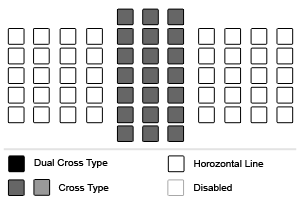 (Group F)
(Group F)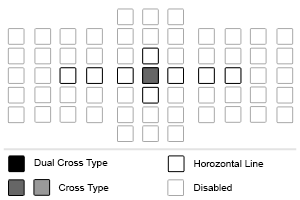
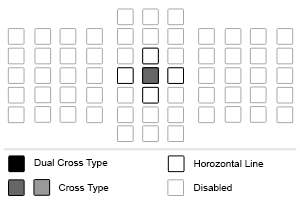 (Group H)
(Group H)
Comments
thanks, very informative review